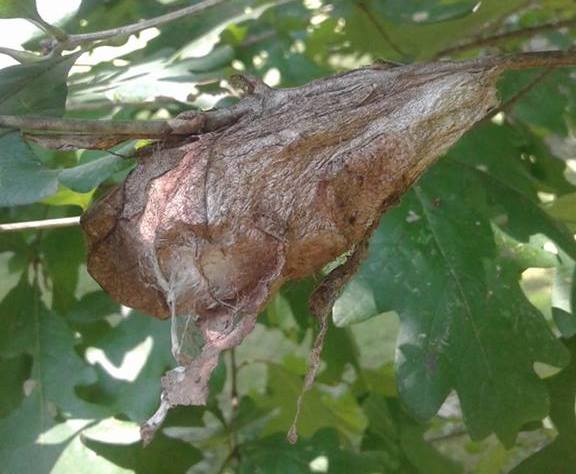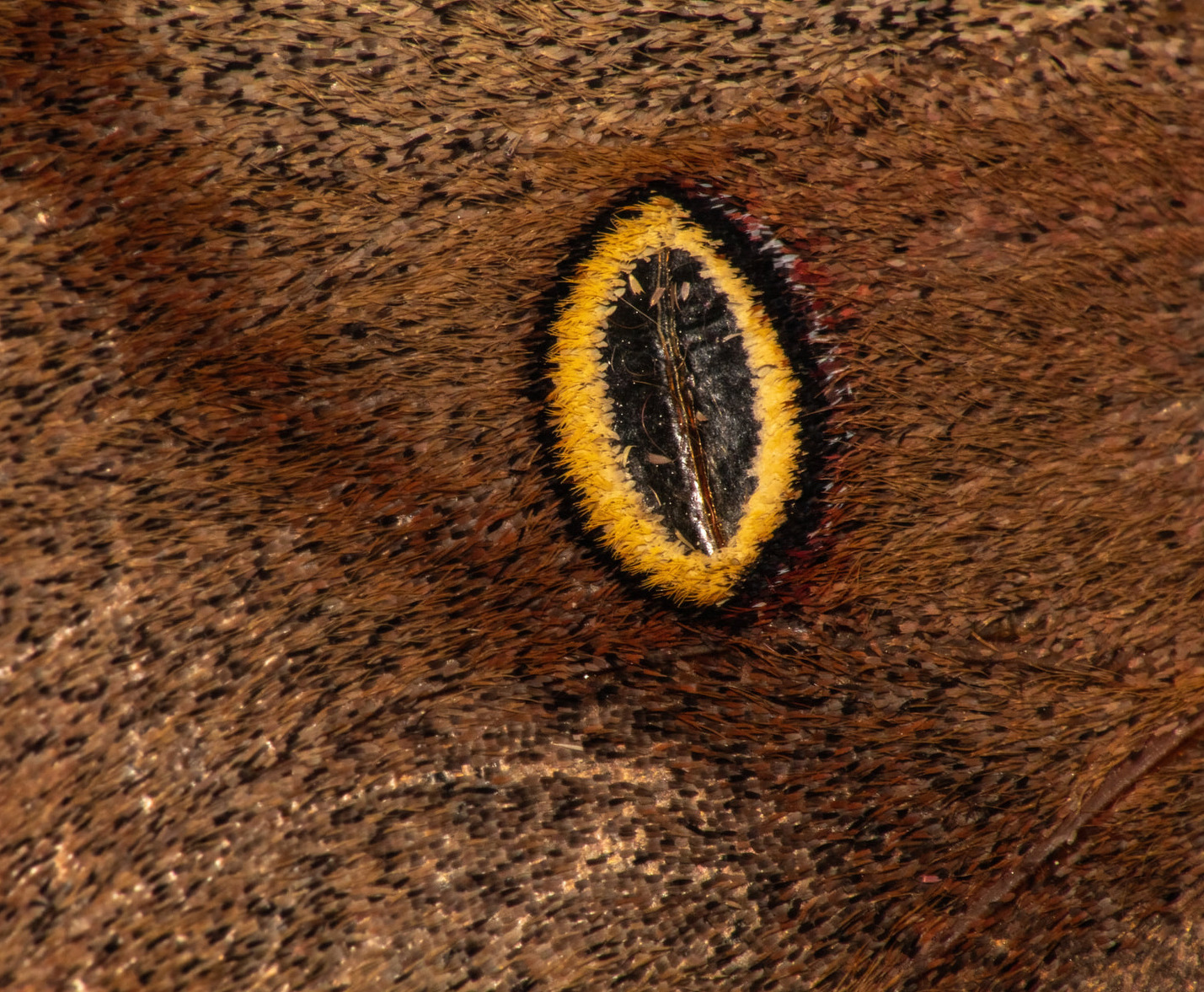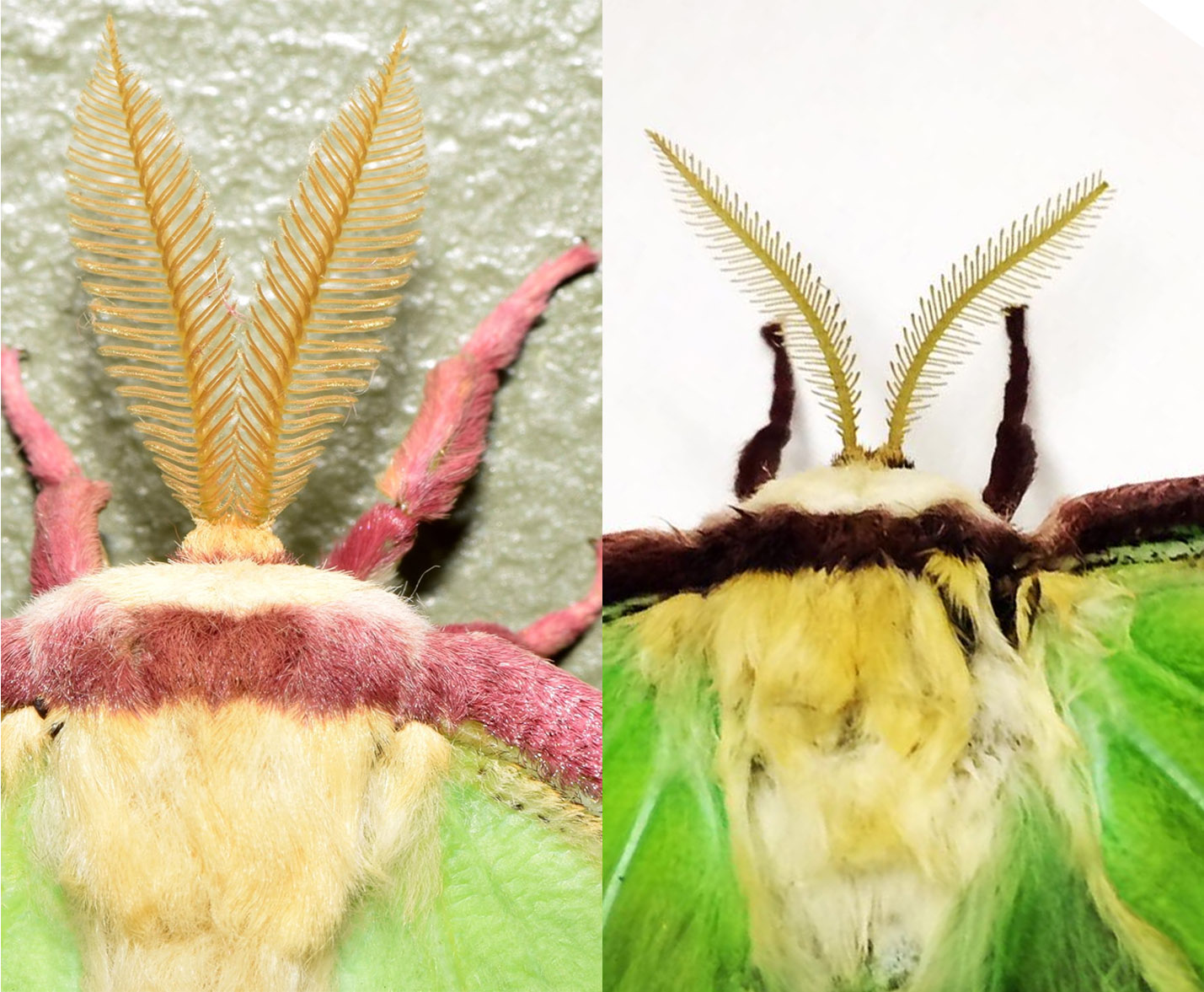ECOLOGY ▪ SCIENCE ▪ EDUCATION
Saturniinae: Pertaining to the Roman god Saturn; perhaps a reference to the presence of concentric-ringed eyespots on many of the species within the family and subfamily — reminiscent of the rings surrounding the planet Saturn.
The suffix inae is standard taxonomic nomenclature to indicate that word pertains to a zoological subfamily.

sa-tur-nee-eye-nee
Saturniinae are medium to large-sized silk moths that comprise one of eight or nine subfamilies within the family Saturniidae. Although the larvae of most species in this subfamily are polyphagous, some species, such as the tulip-tree silkmoth (Callosamia angulifera), are more specialized eaters. The caterpillars pupate in above-ground cocoons spun with silk.

The adult’s wings contain cryptic eyespots used to confuse and startle predators. Their antennae are quadripectinate and broader in males. Except for the promethea silkmoth (Callosamia promethea), all Indiana species are nocturnal. As with other Saturniids, the adults have no digestive system, do not eat, and exist as adults only long enough for reproduction.


| Distribution of Subfamily Saturniinae | ||||
| Taxonomic Level | Worldwide | North America | Midwestern USA | Indiana |
|---|---|---|---|---|
| Tribes | 5a | 2 | 2 | 2 |
| Genera | 76 | 8-9 | 5 | 4-5b |
| Species | ~1089 | ~50 | 6-7 | 5-7c |
a Of the five recognized worldwide tribes of Saturniinae, three (Bunaeini, Micragonini, and Urotini) are nearly all exclusive to the African continent.
bField observers have documented the genus Samia as nearby as Illinois.
cGenus Samia includes one introduced species from Asia, the ailanthus silkmoth (Samia cynthia). The ailanthus silkmoth escaped cultivation for silk production in the United States and has sporadic sightings along the eastern seaboard into the Midwest. It is undetermined if this species constitutes an established wild population in the United States.
Saturnia, a genus first described by Franz Paula von Schrank in 1802.

The map, graph, and data below represent the Indiana sightings of the tribe Saturniinae. All sightings were confirmed through photographic evidence by individuals who contributed to the Great American IN Nature Lepidoptera Project (GAIN LP). All data is current as of 02 May 2024.
Counties recorded:
79 of 92
Top counties/#of records:
Monroe: 117
Washington: 115
Marion: 108
Hamilton: 99
Brown: 87
Scott: 74
Porter: 64
 GAIN LP documented in county
GAIN LP documented in county
Attacini and Saturniini courtesy of Rick Malad. Hyalophora cecropia cocoon courtesy of Tim Bailey. Antheraea polyphemus (eyespot) courtesy of Isaac Morris. Actias luna antennae courtesy of Chris Joll (male) and Amanda Smith (female).